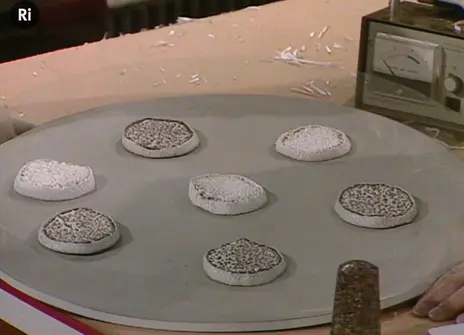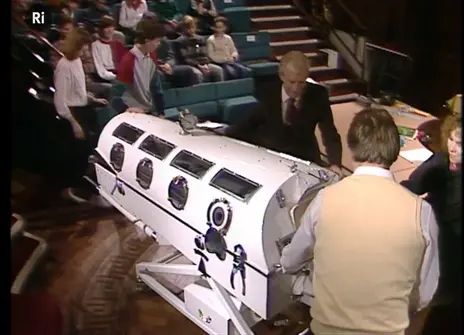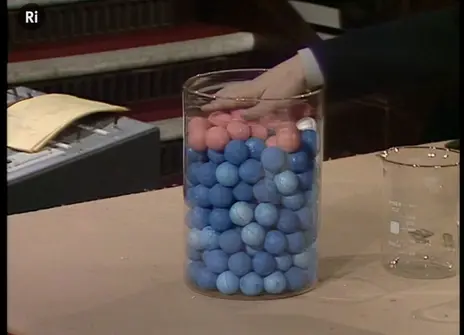Lecture 4 – Bodies and antibodies
From the 1984 lecture programme:
The body protects itself against infection by bacteria, viruses, molds and parasites by having a system for recognising these invading organisms as foreign.
A subset of the blood's white cells, the lymphocytes, manufactures a very complex set of proteins, the antibodies, which have exquisite sensitivity for foreignness.
Literally millions of different types of antibodies can be made to recognise any sort of infection. Vaccination is a form of priming the body, for example, by killed virus, so that when infection comes the body can respond quickly enough to stop the infection from gaining a hold.
New types of vaccines are now being produced by genetic engineering techniques. The body's ability to recognise foreignness can be exploited experimentally to make antibodies to almost any substance. These antibodies can then be used to identify and measure specifically the presence of a substance, for example, of the hormone which only appears very early in pregnancy — hence the pregnancy test.
The body's recognition system also recognises the foreignness of tissues from another person. Hence the need to match for blood transfusion and kidney grafting.
The tissue types which are recognised in graft rejection are also involved in controlling the recognition system itself. Sometimes when the system does not work properly, the body's own tissues are attacked causing diseases such as rheumatoid arthritis and juvenile diabetes, but only in people with certain tissue types.
Using genetic engineering techniques the antibody and tissue type genes have been characterised leading to new possibilities for controlling the body's recognition system, and so the diseases it sometimes causes, as well as graft rejection.
About the 1984 CHRISTMAS LECTURES
From the 1984 lecture programme:
We are all different, in looks, in behaviour, and in our susceptibility to disease. Many of these differences are reflected in the chemical makeup of our body and its cells, and most such differences are inherited.
The basic determinants of inheritance, the genes, make up the chromosomes that are found in the nucleus at the centre of every cell. The formal mechanics of inheritance and chromosome behaviour were worked out by Mendel, and later, his successors in the early years of this century. But the chemistry of the genes starts with the DNA double helix of Watson and Crick.
The language of the genes has now been deciphered, so that the small misprint that can cause a major disease, such as the sickle-cell anaemia found mainly in people of African origin, can be read and interpreted.
New developments in genetics have made it possible to study the chemistry of the genes to an extent that could hardly even have been imagined only ten or fifteen years ago. This new genetics, or genetic engineering as it is sometimes called, is beginning to uncover the secrets underlying individual differences, and to provide the tools for understanding and perhaps correcting diseases with a genetic basis.
Now we are beginning to see what it might be that turns a normal cell into a cancer cell, and why the body sometimes attacks itself to produce diseases such as diabetes in children or rheumatoid arthritis.
When will the new genetics tell us why, or whether, one person may become a gifted painter, another a musician, another an athlete and another a mathematician? How far can we go in explaining the infinite variety of mankind?






